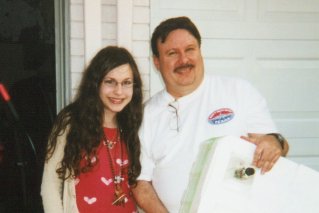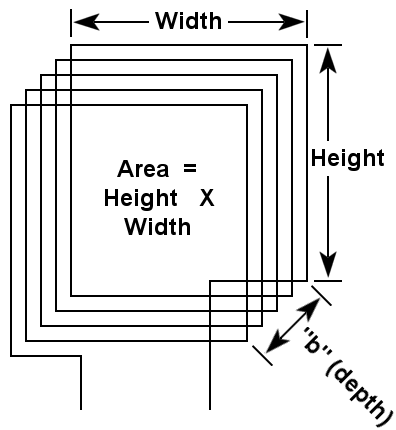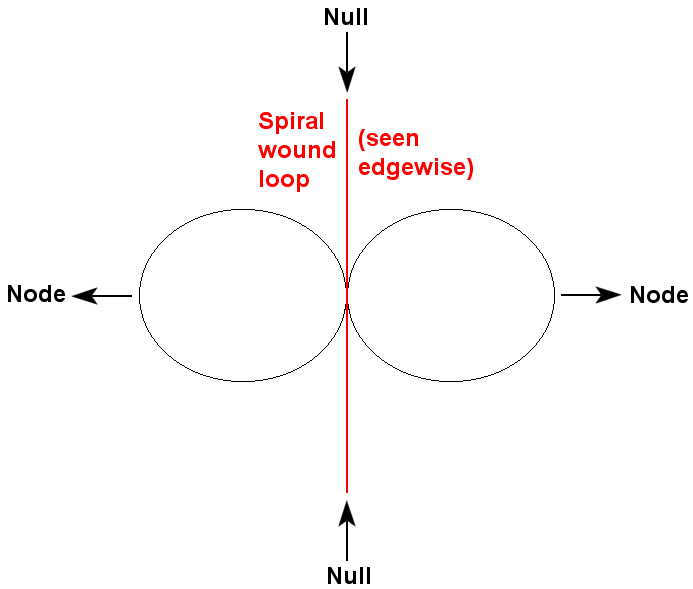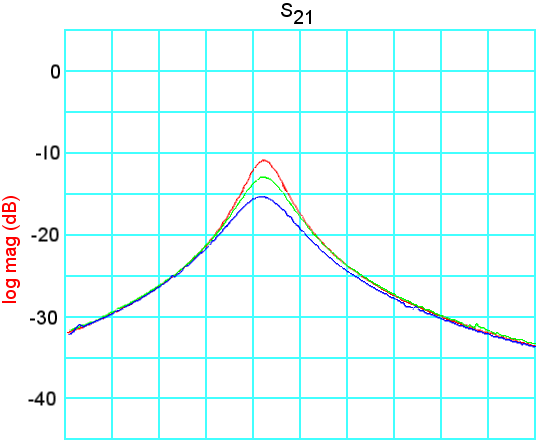
Now QUINN approved!

Erin Sanders, who played the part of teenage inventor Quinn Pensky on Nickelodeon's "Zoey 101" show, with the author. She and her mother recently visited, and were impressed when this loop's little brother (also described below) was able to vastly improve very weak reception from a distant station on an average radio.
An AM loop antenna is one of the true marvels of electronics. Requiring no power, it takes advantage of the resonant properties of an inductor and a capacitor connected in parallel to receive weak AM stations. The physics of resonance allows it to have substantial gain, even though it is comprised of passive components! The "loop" part of the antenna is the inductor, and the tuning capacitor makes it resonate at a desired frequency. The schematic diagram of an AM loop antenna is shown below. It consists of an inductive winding and a tuning capacitor. The inductive winding consists of a primary, which forms a resonant network with the tuning capacitor. A sense winding may be included that provides electrical connection to a radio's external antenna jacks. This is not necessary in many cases, all you have to do is get the radio within a few inche of the loop to couple the signal from the antenna.

As nice as loop antennas are, there are some limitations you might want to consider before considering one:
Many articles have been written describing the construction of loop antennas, but they have been deficient in many respects. Some areas that are never adequately explained are:
A loop antenna resonates according to the formula:

where:
The problem for loop designers comes in designing a loop with the desired value of inductance for their tuning capacitor. Ideally, the fully meshed position of the tuning capacitor should tune the loop antenna just below the lowest frequency in the desired band, and the fully open position of the tuning capacitor should tune the loop antenna just above the highest frequency in the desired band. In practice, this is sometimes a challenge because the AM band tunes over a frequency range that is 3:1 (1700 / 540 = 3.15). Surprisingly, I get the best results by adding more turns to the loop so I can use the newer 9.6 to 250 pf tuning capacitors.
Rectangular and square loops are easy to construct, being built from wooden crossbars, wooden frames, attached to doors, or even made of PVC pipe. There are two sources of equations for the inductance of the loop given below. It would be very nice if they produced the same result, but they do not. I pre-loaded a 3 foot ribbon cable loop into my Javascripts, and:
If you increase the number of turns in the Joe Carr calculator by 1, it produces 296.70mH, which happens to be pretty close to the UMR-EMC result. But adding the extra turn is "cheating". So which is right? Both are - they both did a lot of research and obviously have supporting data for their formula. Bottom line, throw in the inter-winding capacitance and you have some experimentation to do.
The Joe Carr's Tech Note formula approximates rectangular loops provided that the aspect ratio is not too large. The formula is:

Where:
His general form of the equation in the link above contains factors for other geometries - I've seen a few people make hexagonal and ocatagonal loops, but I assume the majority are making square.
I have taken the Joe Carr formula and created a Javascript calculator for square loop antennas.
The good folks at the Missouri University of Science - EMC Center have done a lot of research into loop antennas. In fact, they may be the leading edge of the state of the art. Amazing site and capabilities - you just might spend a whole day on their site! They have developed their own formula:

Where:
They have also posted javascript calculators based on it:
Their formula above is the general solution for both rectangular and square loops. If you do the math with both sides equal in length, their formula reduces to the one they have on the square loop calculator.
I have made my own version of their calculator:
AM Loop Antenna Calculator based on the UMR EMC formula
Many hobbyists have build round loop antennas. Two formulas exist, and like the cases of square loops they do not produce the same results. In fact, they differ by almost a factor of 2. This makes it possible for me to say that Bob's Tesla Lab formula appears to be more accurate.
Bob's Tesla Web Lab has a formula for round loop antenna design:

Where:
This formula seems to work properly when I reverse engineered the Terk AM Advantage:
AM Loop Antenna Calculator using the Bob's Tesla Lab formulaThe UMR-EMC Lab has a formula for round loop antenna design:

Where:
This is the UMR-EMC Javascript
I've also done my own javascript calculator for AM loop antennas based on their formula.
AM Loop Antenna Calculator using the UMR-EMC Lab formula for round loops
There are two choices for loop mechanical construction - edge wound and spiral wound. My construction articles are all for edge wound antennas, but many articles linked below describe spiral wound loops.
An edge wound loop has each turn exactly the same size and on top of the preceding turn:

It is most sensitive to signals coming in the plane of the windings:

The reception pattern can be visualized as a figure 8 pattern, with the loop most sensitive to anything inside the "8", and less sensitive to anything outside the "8". The actual reception pattern is many times the physical size of the loop - the loop size was increased orders of magnitude in the figure to show the physical construction and orientation. The term "node" refers to the areas of highest sensitivity, and "null" to the areas of lowest sensitivity. While the nodes of loop antennas are quite broad, the nulls can be very sharp. A signal source perpendicular to the axis of an edge wound loop may not be received at all!
A spiral wound loop consists of a flat spiral of wire, where each turn is enough larger than the previous to fit snugly around it:

The reception pattern of a spiral loop is shown below:

A spiral loop is least sensitive to signals received in its plane.
I recently had occasion to do extensive loop antenna testing in a controlled, laboratory environment. I was working at a higher frequency, but the mathematics and behavior of loops is identical to the behavior of AM loops. Because I was dealing with very small loops, I could make as many loop antennas as I wanted - and they were easy to deal with.
We all know that the bigger the loop, the more sensitive it is. Here is the proof:

This data, taken from a nework analyzer, shows the results for rectangular, edge wound loops varying from a single turn (3.775 inch edge) to 5 turns (0.32 inch edge), which translates to an area ranging from 14 to 0.1 in2. All were the same inductance, and resonated with almost the same value of capacitance. It is interesting that the area varied over such a wide range. It is also very interesting that the received signal strength changed in increments of about 5 dB, except for the 4 - 5 turn increment where the mechanics of the loops were increasingly difficult to control (the bending radius of 20 AWG wire made both loops almost identical). Extrapolating this down in frequency and up in size, each time the area is increased enough to require one less turn, you can expect a power increase in the received signal of 5 dB, which is a jump of 3.16:1. To receive really weak signals - make the loop BIG! Incidentally, I had almost identical results for spiral wound loops.
The larger the guage of wire, the higher the sensitivity. But - it comes with a cost. As you increase the Q, you decrease the bandwidth of the loop. It is possible to actually attenuate higher audio frequencies if you make the Q too high, an effect documented by crystal radio enthusiasts such as Tom Polk. But there is an easy fix - a resistor in parallel with the loop and tuning capacitor. But that will lower the sensitivity again. It might be useful to make an extremely high Q loop and then have variable resistance in parallel to adjust the bandwidth.

As expected the Q and sensitivity increased with larger guage wire. An alternative to larger guage wire is Litz wire (available at Skycraft. If you are making a remote tuned loop that will be mounted outdoors, Litz wire may not be your best choice. It corrodes outside - FAST! The best way to get more sensitivity, however, is still to increase the loop size.
My articles form a sort of chronological "journey" of loop construction projects and things I learned along the way - read them in the order listed below to learn along with me!
Please be aware of some things
Feel free to email me at ![]() if you have any material that will help to improve this page! Sorry for the unclickable graphic - spammers are scum that
harvest email addresses from web pages.
if you have any material that will help to improve this page! Sorry for the unclickable graphic - spammers are scum that
harvest email addresses from web pages.